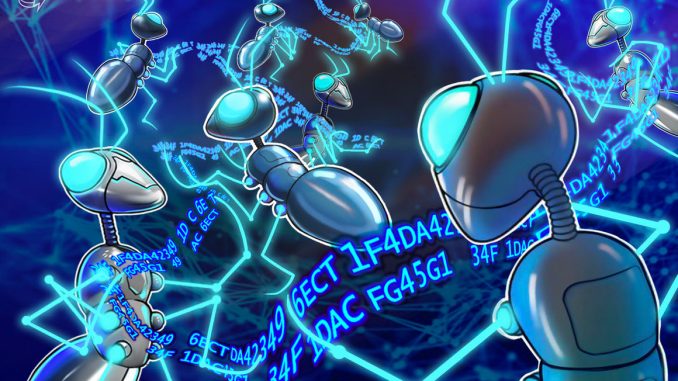
In 2018, Ethereum lead developer Fabian Vogelsteller contacted the community for a new standard for smart contracts he created alongside co-founder Vitalik Buterin. Dubbed ERC-20, Vogelsteller, at the time, only wished for input regarding the novel idea. Little did he know that ERC-20 would ignite a wave of initial coin offerings (ICOs) shortly after its inception to become the industry gold standard for issuing tokens on the Ethereum blockchain.
Just as ERC-20 tokens were gaining traction, Vogelsteller left the Ethereum Foundation the same year to focus on developing a new blockchain, Lukso. In an interview with Cointelegraph, the ERC-20 inventor discussed his motivation for creating his multiverse blockchain, as well as the latest token standard developments in the sector.
Let’s pump that creator economy they are currently rekt. pic.twitter.com/tIGiGjTpYn
— Fabian Vogelsteller (@feindura) July 20, 2023
Cointelegraph: Currently, ERC-20 is the gold token standard in the ecosystem. But in 2018, you left Ethereum to develop Lukso. What was the motivation behind that?
Fabian Vogelsteller: The human story behind it is that Marjorie [who is also Lukso’s co-founder], my wife at the time, had an idea of creating a blockchain for lifestyle and fashion. And I thought that’s a great idea. So, the story evolved to create a blockchain specifically focused on more mainstream use cases, such as for lifestyle, fashion designers, social media, content creators and YouTubers. Anything that’s more like what the internet users today would use rather than the token, finance or DeFi world.
CT: What inspired you to create the ERC-20 standard?
FV: I proposed the ERC-20 standard based on a concept from Vitalik. We discussed this, and it became the first smart contract standard. I called it an Ethereum Request for Comment because I just wanted to have comments. And I thought we’d issue a number randomly, like 20. This was never really thought out. So everything was just us going with the flow and figuring out how we use this stuff.
CT: How does the traction currently look for Lukso?
FV: Basically, we built out this smart contract account completely over the last five or six years. On May 23, we launched a mainnet that’s exactly like Ethereum. It’s the same tech and the same consensus algorithm. We started with 10,300 validator keys that are only community members. Now, the network has been running for one and a half months, and we have around 23,000 validators and growing.
CT: So, if it’s so similar to Ethereum, what was your rationale for spending all these years to create your own blockchain instead of just launching it as a layer-1 or layer-2 on Ethereum?
FV: There are multiple reasons. Number one, we are trying to attract a new crowd, a new group of people, a new ecosystem — an ecosystem that doesn’t currently exist — to create our economy.
But the main reason is to get people to adopt these new building blocks. You could never do this on Ethereum. If I would go and propose an ERC and say, “Here’s a super smart contract account system,” everyone will say we have ERC-20 already. You know, nobody would do anything; nobody would adopt this.
And the other thing is when you are proposing a base account, you have the problem that you need to pay for the deployment for users, and they also need to pay gas fees. In order to solve this problem, we basically create a new chain to subsidize early users.
CT: Another token standard that’s getting very popular recently is BRC-20 tokens. What are your thoughts on the future of Bitcoin or Inscriptions and Ordinals?
FV: The fact that it’s called BRC-20 makes it already a joke. Obviously, he [the developer] means that as a joke. It’s good if people like us to create new standards. That said, Bitcoin is extremely limited; it’s not a generic programmable blockchain, and it’s slow. I stopped using Bitcoin in 2014 because it’s just slow and outdated.
CT: You’ve been focusing your attention on Lukso for nearly six years now. How are you guys doing in terms of the runway?
FV: We did an ICO in 2019-2020, [and it] kind of kicked off the ICO wave. I made something called a reversible ICO. What we did is that people had eight months to buy LYX tokens with refunds. So, for example, after four months, if they realize, “Oh, Fabian is an idiot, and this project is shit,” they could have gotten their money back. Out of the 42 million LYX in circulation, the foundation holds about 26% of it. We are building everything from the LYX we have. And we are operating from that.
Magazine: ‘Elegant and ass-backward’: Jameson Lopp’s first impression of Bitcoin





Be the first to comment